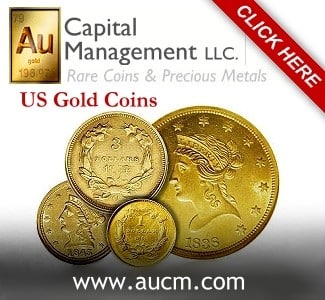Veteran numismatists may remember the GSA Hoard and the great rush on Morgan silver dollars that occurred during the early 1960s. For generations, these coins had laid undisturbed in U.S. Treasury Department and Federal Reserve vaults, serving primarily as a backing for silver certificates. When Congress changed the written obligation appearing on silver certificates in 1935 so that the notes could be redeemed “in silver” instead of in “silver dollars”, production of these coins ceased. Only in the far western states were silver dollars used in daily commerce. Even collectors showed little interest in Morgan silver dollars and Peace dollars.
Starting about 1958, however, the number of silver dollars being withdrawn from government vaults increased annually, reaching a fever pitch in 1963 and ’64. In November 1962, during an annual distribution, it was discovered that there were some rare and valuable dates, still sealed in their original mint bags and all in uncirculated condition, among the millions of dollar coins still in the Treasury vaults.
Lines stretching for blocks formed around the Treasury Department headquarters in Washington, D.C., as speculators bought up silver certificates to redeem them for $1,000 bags of “cartwheels”. In March 1964, the Treasury, after having discovered many bags of scarce Carson City Mint “CC” dollars, stopped redeeming silver certificates with silver dollars, offering bars or granules in their place. After June 24, 1968, the redemption of silver certificates in silver ceased altogether, though the notes remain legal tender to this day.
The Treasury then inventoried its remaining stock of dollar coins, and found approximately 3,000 bags containing three million coins. Many of these coins were Carson City Morgans, which carried a premium even then. These coins were turned over to the General Services Administration (GSA) for sorting, marketing, and disposal at a profit to the government. The GSA sorted the coins into several categories, the most populous of which was the “Uncirculated CC”, and in a series of sales lasting from 1973 to 1980, the dollar hoard was dispersed via auction and fixed prices.
1971 film of the transportation and sorting of the GSA Dollar Hoard
Five sales were conducted in 1973 and ’74, but sales were poor. There was much complaining among the coin buying public, many stating that the United States Government should not be in the “coin business”, especially considering that the government had spent little more than a dollar to mint and store each coin. After these sales, more than a million coins were still left unsold.
This remaining hoard, mostly Morgan silver dollars minted at Carson City (CC), sat until 1979 and ’80, where, amidst an extraordinarily volatile precious metals market, the remaining coins were sold under chaotic conditions. The GSA, having published minimum bids in November 1979, announced on January 2, 1980, that those minimum bids were no longer valid and that prospective bidders would have to “call in” to a toll-free number to get current minimum bids.
Then, on February 21–13 days after the bidding process officially began–the maximum number of coins per bidder was changed from 500 to 35. Many bidders, under these confusing conditions, ended up with no coins at all. Complaints again flooded in to Congress, but the damage had already been done, and the last silver dollars held by the United States Treasury were gone. Sealed in rigid plastic holders and boxed with a message from then-President Richard M. Nixon, these silver dollars account for most of the mint state CC Morgans known today.

How much is mycc Morgan silver dollar worth ex.condition